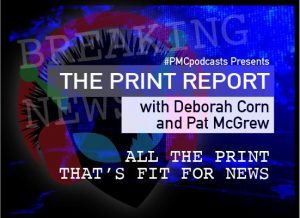Martin Bailey, distinguished technologist at Global Graphics Software, joins hosts Deborah Corn and Pat McGrew in this special episode of The Print Report. Together they discuss the innovative methods used at Global Graphics to solve complex and common printing problems using software.
Martin highlights the award-winning PrintFlat™ technology, which gives smooth, uniform tints and accurate tone reproduction via a simple ‘fingerprint’ calibration of the screening process, and the value of creating optmized PDF files so they don’t slow down your digital press and disrupt the production process.
Tune in here:

